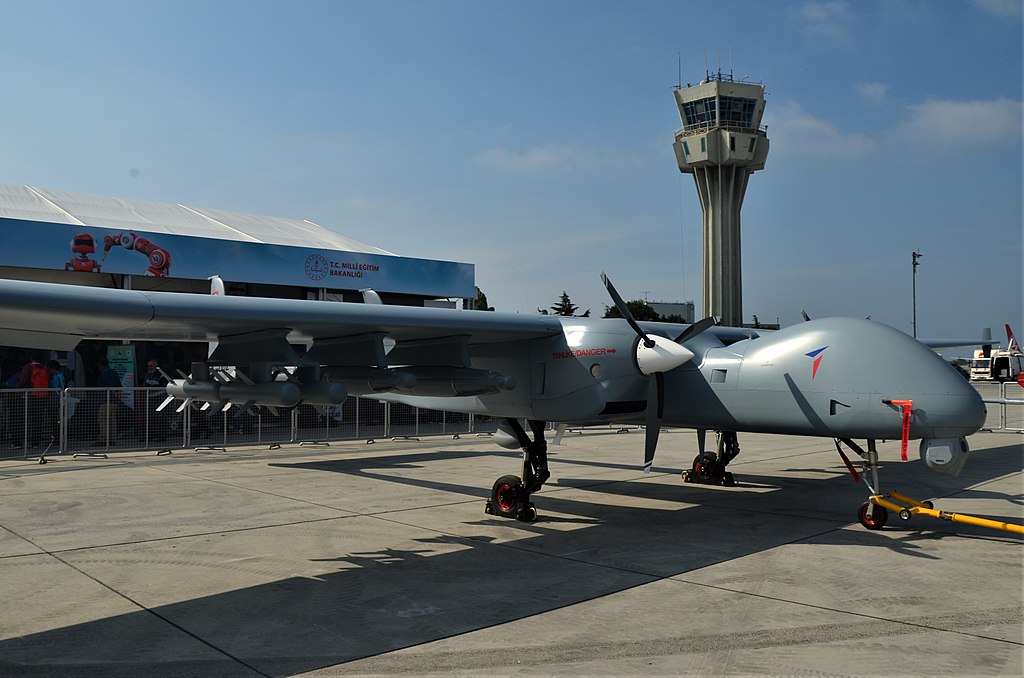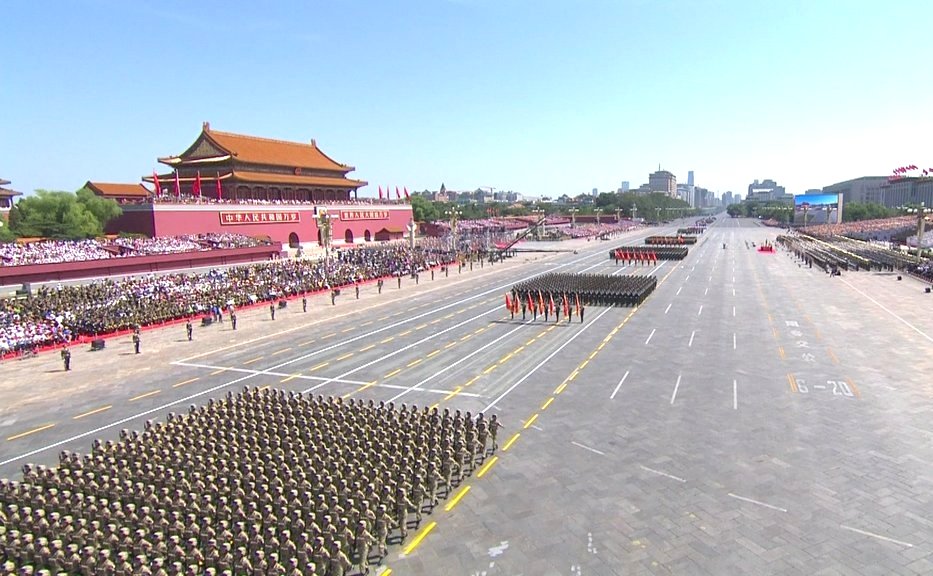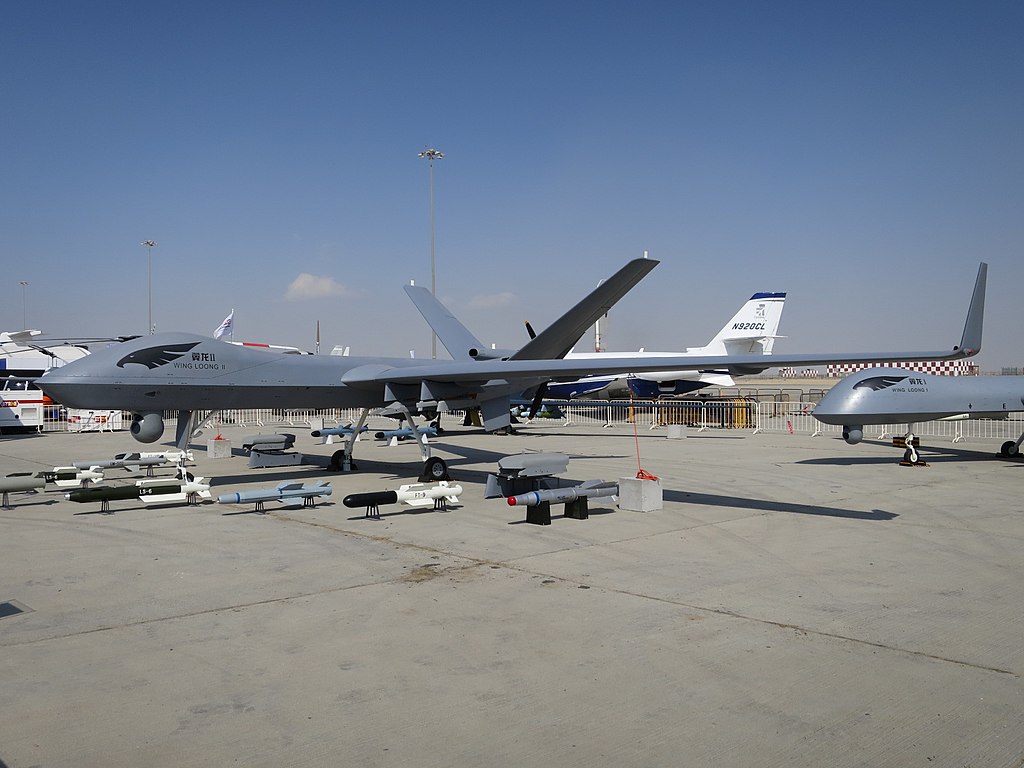
TAI Aksungur at Teknofest 2019.
“Morocco issued a warning to Iran, which is accused of militarily supporting separatist and terrorist groups“
Over the past year, both Algeria and Morocco have bolstered their unmanned aerial vehicle (UAV) capabilities by importing technology from China, Turkey and—in the case of Morocco—Israel.[i] As detailed in the first excerpted article, in October 2022, the Spanish news website OkDiario reported on a video showing a Chinese Wing Loong II UAV flying over Morocco, seemingly confirming that Morocco had acquired several of these platforms after expressing interest in them earlier this year. Also in October, as detailed in the second excerpted article, the independent Algeria-focused military news website Menadefense reported that Algeria, which has a Wing Loong II fleet of its own, had become the first export client for the Turkish TAI Aksungur long-range UAV, after signing a deal to acquire six units.
While China and Turkey appear willing to sell technology and deepen security cooperation with both Morocco and Algeria, Israeli-Moroccan cooperation has likely geopolitical implications given fears of Iranian and Russian meddling in the region.[ii] As shown in the third excerpted article, in September the Moroccan English-language news website Morocco World News reported that Morocco had acquired at least 150 small vertical takeoff and landing (VTOL) unmanned aircraft from the Israeli firm BlueBird Aero Systems. The deal includes both the small WanderB model and a larger ThunderB model, as well as an agreement to build two UAV manufacturing plants in Morocco, the first of their kind. In the fourth excerpted article, in early October, as reported by the Moroccan news website Le360, an official from the Polisario Front, the Western Sahara independence movement that is supported by Algeria and opposed by Morocco, claimed that Sahrawi fighters would soon begin employing armed UAVs against Moroccan forces. These remarks prompted Morocco’s Foreign Minister to equate Polisario with Yemen’s Houthi Movement, accusing Iran of arming Polisario with Algerian complicity. Indeed, Moroccan accusations of Iranian support for Polisario are not new, as explained in the fifth article from the Qatari-aligned al-Araby al-Jadeed. While the accusations may have seemed fanciful four years ago, they seem less so now, given Israel’s quickly growing security footprint in Morocco and the fact that Algeria’s key security partner—Russia—is itself relying on Iranian military support in Ukraine.
Sources:
Pelayo Barro. “Marruecos compra los drones militares chinos más modernos mientras España le regala 4×4 (Morocco buys the most advanced Chinese drones while Spain gifts it 4x4s),” OkDiario (Spanish news website), 2 October 2022. https://okdiario.com/espana/marruecos-compra-drones-militares-chinos-mas-modernos-mientras-espana-regala-4×4-9739842
The latest [Moroccan] acquisition has not been ignored by Spain’s military intelligence: new-generation strategic Chinese drones with air-ground attack capabilities and endurance of over 7,000 kilometers… Mohammed VI’s armed forces had previously eyed these drones – called Wing Loong II – and had even proposed acquiring them to replace a previous Chinese drone they had already employed in their war against the Polisario Front.
“L’Algérie achète des drones d’attaque Aksungur (Algeria purchases Aksungur attack drones),” Menadefense (independent Algeria-focused military news website), 7 October 2022. https://www.menadefense.net/algerie/lalgerie-achete-des-drones-dattaque-aksungur/
The Algerian Air Force has ordered six Turkish MALE drones from TAI. They are the Aksungur, a larger, more modern, and better performing version than its Anka-S counterpart.
Aya Benazizi. “Morocco Purchases 150 Israeli Military Drones,” Morocco World News (Moroccan English-language news website), 22 September 2022. https://www.moroccoworldnews.com/2022/09/351475/morocco-purchases-150-israeli-military-drones
Morocco has purchased 150 military drones of the WanderB and ThunderB types, manufactured by Israel’s BlueBird Aero Systems, a company specialized in designing and developing Tactical Unmanned Aerial Systems (UAS) equipment…
The agreement concerned the construction of industrial units in Morocco for the manufacture of Israeli drones.
البوليساريو تعلن أن الجزائر ستمدها بطائرات “درون” إيرانية لمهاجمة المغرب
Mohammed Ould Boah. “Polisario announces that Algiera will provide it with Iranian drones to attack Morocco,” Le360 (Moroccan news website), 4 October 2022. https://ar.le360.ma/politique/197102
According to the so-called “interior minister” of the Polisario, the separatists have obtained military drones, which they will use in their attacks against Moroccan territory. In the face of this dangerous escalation, Morocco issued a warning to Iran, which is accused of militarily supporting separatist and terrorist groups.
إيران والمغرب: تشيّع وصواريخ ودرونز
Abdelhamid Ajmahiri. “Iran and Morocco: Shiization, missiles and drones,” al-Araby al-Jadeed (Qatari-aligned daily), 11 October 2022. https://tinyurl.com/2p83v8hm Almost four years after accusing Tehran of handing the separatist Polisario Front advanced weapons – especially Strela surface-to-air missiles – last week Rabat accused Tehran of providing Polisario with drones… It is clear that relations between Rabat and Tehran have entered a bleak zone, now that the [Western Sahara] conflict has been resolved in favor of Moroccan national unity.
Notes:
[i] See: Lucas Winter, “Morocco and Algeria Bolstering Their Drone Fleets as Bilateral Tensions Rise,” OE Watch, Issue 11, 2021; Lucas Winter, “Morocco Denys Conducting Drone Strike Against Algerian Targets in Western Sahara,” OE Watch, Issue 12, 2021; Lucas Winter, “China Arming Algeria To Fight Its ‘New Generation Wars’,” OE Watch, Issue 8, 2022.
[ii] See: Lucas Winter, “Algeria Sees Threat from Morocco as Western Sahara Conflict Threatens To Reignite,” OE Watch, Issue 6, 2022; Lucas Winter, “Algeria Likely To Deepen Military Ties with Russia as Morocco–Israel Security Cooperation Expands,” OE Watch, Issue 9, 2022.
Image Information:
Image: TAI Aksungur at Teknofest 2019
Source: CeeGee (own work), https://commons.wikimedia.org/wiki/File:TAI_Aksungur_Teknofest2019_(1).jpg
Attribution: CC 4.0


